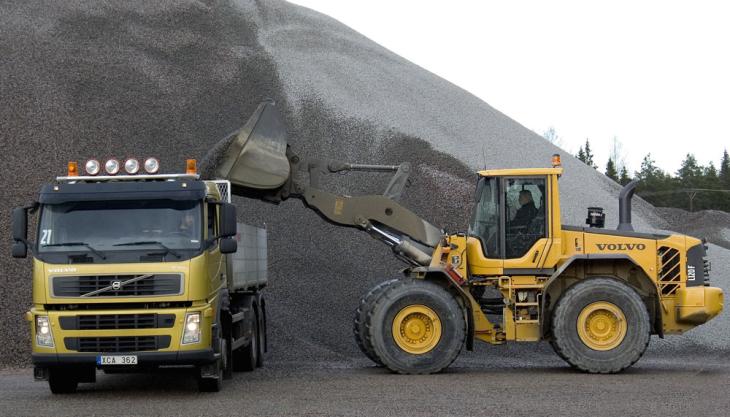MPA publishes long-term demand and supply study

Association sets out GB aggregate demand and supply scenarios from 2016 to 2030
THE Mineral Products Association (MPA) has set out long-term aggregate demand and supply scenarios for Great Britain until 2030.
Launched at the joint Royal Town Planning Institute (RTPI)/MPA Mineral Planning Conference held on 24 May at the NEC in Birmingham, the study aims to provide industry and industry stakeholders with indications of the potential volumes of aggregates that may be needed to satisfy future demand.
It is hoped that the study will help revive interest and dialogue about the provision of aggregate supplies for the long term among all key stakeholders. Key findings include:
- Demand projections suggest that by 2030, 267 million tonnes per annum might be needed to satisfy construction needs.
- Further declines in material intensity, however, could result in aggregates demand peaking at 220 million tonnes per annum in 2023, before undergoing a steady decline to 200 million tonnes per annum by 2030.
- The cumulative demand for aggregates until 2030 could be between 3.2 and 3.8 billion tonnes.
- While there appear to be sufficient indigenous mineral resources available to support future demand requirements, there are issues around the supply mix that need to be addressed.
- Under all supply scenarios considered, significant tonnages of primary aggregates would be needed, supplying between 63% and 72% of overall demand, with recycled and secondary materials providing the balance.
- The decline in permitted reserves of land-won sand and gravel over the last 10 years points to growing reliance on other sources, particularly crushed rock and marine sand and gravel, to meet future demand.
- Alternative sources of aggregates, including recycling, secondary materials and imports, have a role to play but are unlikely to be a game changer given their constraints. The share of recycled and secondary aggregates varies between 28% and 37% of overall demand.
- Future supply of aggregates also faces additional challenges related to issues around transport infrastructure, safeguarding essential minerals infrastructure, eg wharves and railheads, and access to skills.
Commenting on the findings, Aurelie Delannoy, chief economist at the MPA, said: ‘A clear message that comes out of this study is that however cautious you are about the prospects for future construction needs and the resulting aggregates demand, significant volumes of primary aggregate materials will be needed over the next 15 years or so.
‘Construction activity will be dominated by our need to upgrade and renew vital infrastructure, including energy and transport, whilst also building more housing. Strategic infrastructure projects currently in the pipeline, including Hinkley Point C and High Speed 2, as well as the potential for building tidal lagoons in the longer term, will only be possible if future aggregates supply can support the levels of demand that are anticipated.
‘The industry already faces challenges logistically and on skills, but the decline in land-won sand and gravel permitted reserves over the last 10 years, if continued, will put significant pressure on all other sources of aggregates materials to fill the gap. Recycling and secondary materials, alongside increased imports, will have a role to play, but they are no game changer. The major source of aggregates supply for the foreseeable future will need to come from indigenous primary sources.’
Mark Russell, executive director of planning and mineral resources at the MPA, added: ‘While government is understandably focused on the policy priorities of delivering housing and infrastructure, this study demonstrates that unless the link is made to the essential mineral resources upon which they rely, there is a growing risk that the ability to provide the most cost-effective and sustainable supply solutions will be missed.
‘Long-term construction ambitions need to be supported by a properly resourced, long-term mineral planning system to ensure the right resources are available in the right place and at the right time to support sustainable growth. It is vital that government, planning authorities, NGOs and the industry work together to address these issues before avoidable shortages occur in the medium term.’
A copy of the MPA’s ‘Long-term aggregates demand & supply scenarios, 2016-30’ briefing is attached below.









